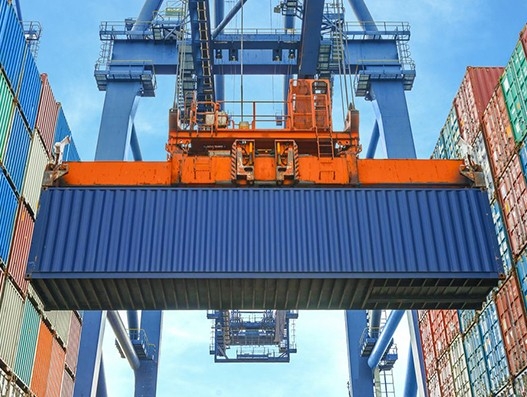
Port of Rotterdam’s container traffic continues to increase
October 24, 2017: Port of Rotterdam’s container throughput increased by 10.1 percent in the first nine months of 2017 compared to the corresponding period in 2016, to a total of 10.2 million units (TEU). The port’s total throughput in that same period increased by 2 percent. In addition to containers, the key contributors to this […]

October 24, 2017: Port of Rotterdam’s container throughput increased by 10.1 percent in the first nine months of 2017 compared to the corresponding period in 2016, to a total of 10.2 million units (TEU).
The port’s total throughput in that same period increased by 2 percent. In addition to containers, the key contributors to this overall growth were the agribulk and breakbulk segments. The port recorded a drop in the throughput of liquid bulk like mineral oil products. A total of 351.5 million tonnes was handled in the period until the end of September.
Allard Castelein, CEO of the Port of Rotterdam Authority, said, “Thanks in part to the 10-percent increase in container throughput volumes, this has proven a fine quarter for our port statistics. Still, this growth is offset by lower throughput volumes in various other segments. For example, the volume of coal handled in our port has fallen in comparison with 2016 due to the closure of two coal-fired power plants in Rotterdam and the increased production of renewable energy. Likewise, the throughput of fuel oil in the third quarter was also lower than last year’s figures.”
The port’s total throughput in 2017 is expected to be 1 to 2 percent higher than that recorded for 2016. Castelein, said, “Reviewing the coalition agreement recently published by the new Dutch government, it appears that in the period ahead, the government will be devoting more attention to the challenges that face us in the longer term – the energy transition, for example. This may have far-reaching consequences for a number of submarkets. We are pleased with these ambitions on the part of the new government. We hope they will result in new regulations and financing options that can support companies in successfully making this transition.”
Liquid bulk
The volume of liquid bulk put through the port decreased by 4.2 percent, to a total of 161.5 million tonnes. Even though higher production rates in the refining sector resulted in 3.5 percent more crude oil being handled in Rotterdam’s port area, the third quarter saw a further decrease in the mineral oil products segment as a whole. This was primarily caused by a drop in the import and export of fuel oil. The main country of origin for fuel oil is Russia. A recent increase in Russian export duties has led to lower production levels and, as a result, declining export volumes. The volume of LNG put through Rotterdam remained more or less the same at 1.3 million tonnes (3 percent lower than the same period in 2016).
Dry bulk
The throughput of dry bulk rose by 1.4 percent to 61.1 million tonnes. The port saw a strong increase in the agribulk category (cereals/animal feed) of 14.7 percent compared to last year (to a total of 8.8 million tonnes). This increase can mainly be attributed to the stepped-up production of biofuels in connection with the relaunch of a production facility for these fuels. There was modest growth in the throughput of iron ore and scrap (0.7 percent, to a total of 23.4 million tonnes) thanks to the increased export of scrap. The volume of coal handled in the port fell by 2.6 percent – due to, among other things, the closure of two coal-fired power plants on Maasvlakte.
Containers
The throughput of containers in the first nine months of 2017 increased by 10.1 percent in TEU (standard capacity unit) and 11.7 percent in tonnes. A total of 10.2 million TEU was handled in the port, corresponding to a total of 105.9 million tonnes.
The increased throughput of containers can be attributed to a number of factors. These include solid autonomous growth in Europe combined with Rotterdam’s favourable position within the new sailing schedules recently adopted by the major alliances, increased productivity and throughput volumes at the Maasvlakte 2 terminals and Rotterdam’s strengthened appeal as a transhipment port in connection with increased vessel sizes and relay/feeder options to/from other European ports.
Breakbulk
Rotterdam saw a further growth of 6.6 percent in roll on/roll off (ro/ro) volumes in the first nine months of 2017 compared to the previous year, to a total of 17.9 million tonnes. This growth was caused by increased cargo flows to the dominant market in this category, the United Kingdom, as well as increased traffic to new markets like Portugal, Iceland and the Scandinavian countries. Other breakbulk also rose in the first three quarters of 2017, by 18.9 percent, as a result of the extra handling of slabs on behalf of the German steel industry – particularly in the first half of the year.

